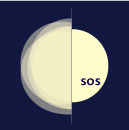|
|
 |
 |
Abstract Review
 Corresponding Author Corresponding Author |
|
|
 |
 Authors Authors |
| Name |  | Affiliation |
|
Elena MASCIADRI |
 |
Osservatorio Astrofisico di Arcetri, Firenze, Italy |
|
Jeff STOESZ |
 |
Osservatorio Astrofisico di Arcetri, Firenze, Italy |
|
Susanna HAGELIN |
 |
Osservatorio Astrofisico di Arcetri, Firenze, Italy |
|
 |
 Abstract Abstract |
| Session |  | 3 (Approaches for modeling atmospheric optical turbulence.) |
| Title |  | 'Mesoscale simulations above Antartica for astronomical applications: first approaches' |
| Abstract |  | The ForOT (Forecast of Optical Turbulence above astronomical site)
project (carried out at the Osservatorio Astrofisico di Arcetri, Italy)
aims to characterize the optical turbulence with measurements and
numerical simulations. The final goal is to create an automatic system
using a mesoscale meteorological model to forecast optical turbulence
with a few hours in advance above atronomical sites, to support the selection and characterization of astronomical sites, and to optimize adaptive optics techniques. We use the French non-hydrostatic mesoscale model named Meso-NH. It is developed jointly by the CNRM (Centre National de Recherches Météorologiques - National Center of Meteorological Researches) and the Aerology Laboratory, in Toulouse, France. It's a well established research model with hundred of users worldwide. Its physics will be implemented in the next generation of operational model of numerical weather prediction of the French meteorological center of Météo-France. A few years ago (Masciadri et al. 1999) Meso-Nh has been adapted to simulate the optical turbulence and the derived astroclimatic parameters. Recently, Masciadri et al. (2004), showed that Meso-Nh can reconstruct cn2 vertical profiles well matching measured ones. The site of Dome C in Antarctica has been chosen for this study because, due to its very good seeing conditions, it is thought to become an astronomical site in the near future. Using wind profiles and surface temperatures observations, different configurations of the model are tested and validated. Numerical simulations are performed, testing horizontal resolution, vertical resolution, description of the surface, and the impacts of these different configurations on the prediction of the wind, temperature and turbulent kinetic energy above the Antartica Plateau.
|
|
Return to Program and Events
|
 |
 |
|



